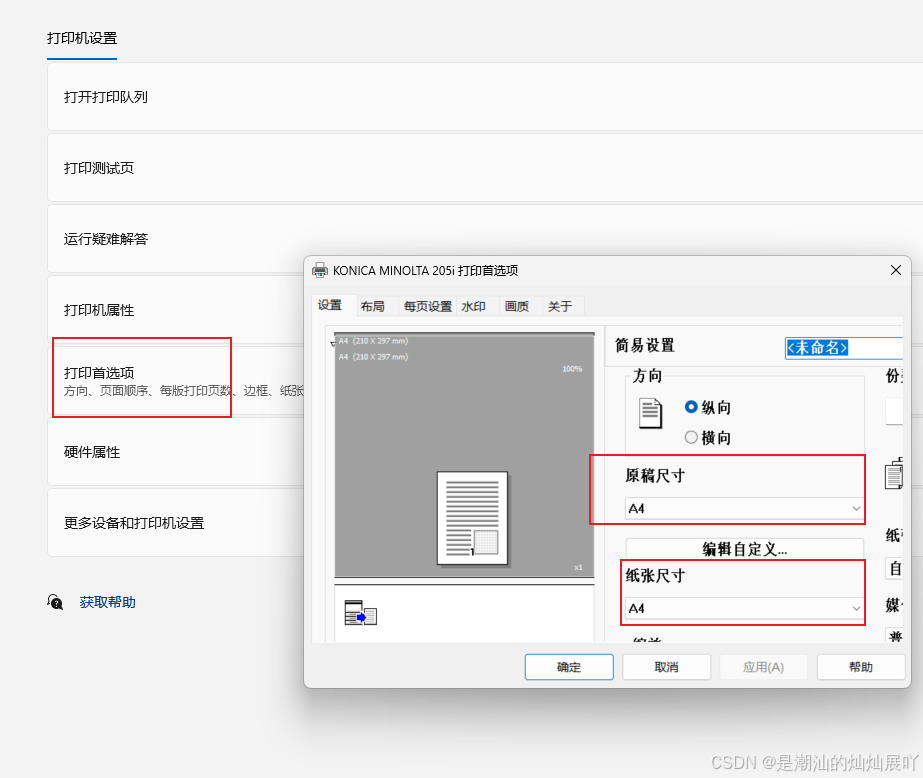目录
一、基本原理
二、代码实现
三、实现效果
3.1原始点云
3.2分割后点云
前期试读,后续会将博客加入该专栏,欢迎订阅
Open3D与点云深度学习的应用_白葵新的博客-CSDN博客
一、基本原理
Open3D 的点云区域生长分割算法是一种基于区域生长的点云分割方法,用于将点云分割成不同的部分。
该算法的基本原理如下:
1.初始种子点选择:
- 从点云中随机选择一个或多个种子点,或者按照一定的策略(如曲率最低点)选择种子点。
2.区域生长:
- 从种子点开始,检查其邻近点,判断这些邻近点是否满足生长条件。如果满足,则将这些邻近点添加到当前区域,并继续从这些新添加的点进行生长。重复这个过程,直到没有新的点可以添加到当前区域。
3.生长条件:
- 距离条件:邻近点与种子点之间的欧氏距离小于预定义的阈值。
- 角度条件:邻近点的法向量与种子点的法向量之间的角度小于预定义的阈值。
- 曲率条件:邻近点的曲率与种子点的曲率之差小于预定义的阈值。
4.区域分割:
- 将点云中所有满足生长条件的点标记为一个区域。
- 从剩余未标记的点中选择新的种子点,重复上述步骤,直到所有点都被分割到不同的区域中。
二、代码实现
import open3d as o3d
import numpy as np
from collections import deque
class RegionGrowing:
# 构造函数
def __init__(self, cloud,
min_pts_per_cluster=1, # 每个聚类的最小点数
max_pts_per_cluster=np.inf, # 每个聚类的最大点数
theta_threshold=30, # 法向量夹角阈值
curvature_threshold=0.05, # 曲率阈值
neighbour_number=30, # 邻域搜索点数
point_neighbours=[], # 近邻点集合
point_labels=[], # 点标签
num_pts_in_segment=[], # 分类标签
clusters=[], # 聚类容器
number_of_segments=0): # 聚类个数
self.cure = None # 存储每个点曲率的容器
self.pcd = cloud # 输入点云
self.min_pts_per_cluster = min_pts_per_cluster
self.max_pts_per_cluster = max_pts_per_cluster
self.theta_threshold = np.deg2rad(theta_threshold)
self.curvature_threshold = curvature_threshold
self.neighbour_number = neighbour_number
self.point_neighbours = point_neighbours
self.point_labels = point_labels
self.num_pts_in_segment = num_pts_in_segment
self.clusters = clusters
self.number_of_segments = number_of_segments
# -------------------------------------参数准备--------------------------------------
def prepare_for_segment(self):
points = np.asarray(self.pcd.points) # 点坐标
normals = np.asarray(self.pcd.normals) # 法向量
# 判断点云是否为空
if not points.shape[0]:
return False
# 判断是否有近邻点
if self.neighbour_number == 0:
return False
# 点云需要包含法向量信息
if points.shape[0] != normals.shape[0]:
self.pcd.estimate_normals(o3d.geometry.KDTreeSearchParamKNN(self.neighbour_number))
return True
# ------------------------------------近邻点搜索-------------------------------------
def find_neighbour_points(self):
number = len(self.pcd.points)
kdtree = o3d.geometry.KDTreeFlann(self.pcd)
self.point_neighbours = np.zeros((number, self.neighbour_number))
for ik in range(number):
[_, idx, _] = kdtree.search_knn_vector_3d(self.pcd.points[ik], self.neighbour_number) # K近邻搜索
self.point_neighbours[ik, :] = idx
# -----------------------------------判意点所属分类-----------------------------------
def validate_points(self, point, nebor):
is_seed = True
cosine_threshold = np.cos(self.theta_threshold) # 法向量夹角(平滑)阈值
curr_seed_normal = self.pcd.normals[point] # 当前种子点的法向量
seed_nebor_normal = self.pcd.normals[nebor] # 种子点邻域点的法向量
dot_normal = np.fabs(np.dot(seed_nebor_normal, curr_seed_normal))
# 如果小于平滑阈值
if dot_normal < cosine_threshold:
return False, is_seed
# 如果小于曲率阈值
if self.cure[nebor] > self.curvature_threshold:
is_seed = False
return True, is_seed
# ----------------------------------对点附上分类标签----------------------------------
def label_for_points(self, initial_seed, segment_number):
seeds = deque([initial_seed])
self.point_labels[initial_seed] = segment_number
num_pts_in_segment = 1
while len(seeds):
curr_seed = seeds[0]
seeds.popleft()
i_nebor = 0
while i_nebor < self.neighbour_number and i_nebor < len(self.point_neighbours[curr_seed]):
index = int(self.point_neighbours[curr_seed, i_nebor])
if self.point_labels[index] != -1:
i_nebor += 1
continue
belongs_to_segment, is_seed = self.validate_points(curr_seed, index)
if not belongs_to_segment:
i_nebor += 1
continue
self.point_labels[index] = segment_number
num_pts_in_segment += 1
if is_seed:
seeds.append(index)
i_nebor += 1
return num_pts_in_segment
# ------------------------------------区域生长过程------------------------------------
def region_growing_process(self):
num_of_pts = len(self.pcd.points) # 点云点的个数
self.point_labels = -np.ones(num_of_pts) # 初始化点标签
self.pcd.estimate_covariances(o3d.geometry.KDTreeSearchParamKNN(self.neighbour_number))
cov_mat = self.pcd.covariances # 获取每个点的协方差矩阵
self.cure = np.zeros(num_of_pts) # 初始化存储每个点曲率的容器
# 计算每个点的曲率
for i_n in range(num_of_pts):
eignvalue, _ = np.linalg.eig(cov_mat[i_n]) # SVD分解求特征值
idx = eignvalue.argsort()[::-1]
eignvalue = eignvalue[idx]
self.cure[i_n] = eignvalue[2] / (eignvalue[0] + eignvalue[1] + eignvalue[2])
point_curvature_index = np.zeros((num_of_pts, 2))
for i_cu in range(num_of_pts):
point_curvature_index[i_cu, 0] = self.cure[i_cu]
point_curvature_index[i_cu, 1] = i_cu
# 按照曲率大小进行排序
temp_cure = np.argsort(point_curvature_index[:, 0])
point_curvature_index = point_curvature_index[temp_cure, :]
seed_counter = 0
seed = int(point_curvature_index[seed_counter, 1]) # 选取曲率最小值点
segmented_pts_num = 0
number_of_segments = 0
while segmented_pts_num < num_of_pts:
pts_in_segment = self.label_for_points(seed, number_of_segments) # 根据种子点进行分类
segmented_pts_num += pts_in_segment
self.num_pts_in_segment.append(pts_in_segment)
number_of_segments += 1
# 寻找下一个种子
for i_seed in range(seed_counter + 1, num_of_pts):
index = int(point_curvature_index[i_seed, 1])
if self.point_labels[index] == -1:
seed = index
seed_counter = i_seed
break
# ----------------------------------根据标签进行分类-----------------------------------
def region_growing_clusters(self):
number_of_segments = len(self.num_pts_in_segment)
number_of_points = np.asarray(self.pcd.points).shape[0]
# 初始化聚类数组
for i in range(number_of_segments):
tmp_init = list(np.zeros(self.num_pts_in_segment[i]))
self.clusters.append(tmp_init)
counter = list(np.zeros(number_of_segments))
for i_point in range(number_of_points):
segment_index = int(self.point_labels[i_point])
if segment_index != -1:
point_index = int(counter[segment_index])
self.clusters[segment_index][point_index] = i_point
counter[segment_index] = point_index + 1
self.number_of_segments = number_of_segments
# ----------------------------------执行区域生长算法-----------------------------------
def extract(self):
if not self.prepare_for_segment():
print("区域生长算法预处理失败!")
return
self.find_neighbour_points()
self.region_growing_process()
self.region_growing_clusters()
# 根据设置的最大最小点数筛选符合阈值的分类
all_cluster = []
for i in range(len(self.clusters)):
if self.min_pts_per_cluster <= len(self.clusters[i]) <= self.max_pts_per_cluster:
all_cluster.append(self.clusters[i])
else:
self.point_labels[self.clusters[i]] = -1
self.clusters = all_cluster
return all_cluster
# ------------------------------读取点云---------------------------------------
pcd = o3d.io.read_point_cloud("walls.pcd")
o3d.visualization.draw_geometries([pcd], window_name="原始点云",
width=1024, height=768,
left=50, top=50,
mesh_show_back_face=False)
# ------------------------------区域生长---------------------------------------
rg = RegionGrowing(pcd,
min_pts_per_cluster=50, # 每个聚类的最小点数
max_pts_per_cluster=1000000, # 每个聚类的最大点数
neighbour_number=30, # 邻域搜索点数
theta_threshold=30, # 平滑阈值(角度制)
curvature_threshold=0.005) # 曲率阈值
# ---------------------------聚类结果分类保存----------------------------------
indices = rg.extract()
print("聚类个数为", len(indices))
segment = [] # 存储分割结果的容器
for i in range(len(indices)):
ind = indices[i]
clusters_cloud = pcd.select_by_index(ind)
r_color = np.random.uniform(0, 1, (1, 3)) # 分类点云随机赋色
clusters_cloud.paint_uniform_color([r_color[:, 0], r_color[:, 1], r_color[:, 2]])
segment.append(clusters_cloud)
# 保存到本地文件夹
# file_name = "Region_growing_cluster" + str(i + 1) + ".pcd"
# o3d.io.write_point_cloud(file_name, clusters_cloud)
# -----------------------------结果可视化------------------------------------
o3d.visualization.draw_geometries(segment, window_name="区域生长分割",
width=1024, height=768,
left=50, top=50,
mesh_show_back_face=False)
三、实现效果
3.1原始点云

3.2分割后点云












![[React 进阶系列] useSyncExternalStore hook](https://i-blog.csdnimg.cn/direct/4d942022fca64e989acdeaef6b6664a1.png)







